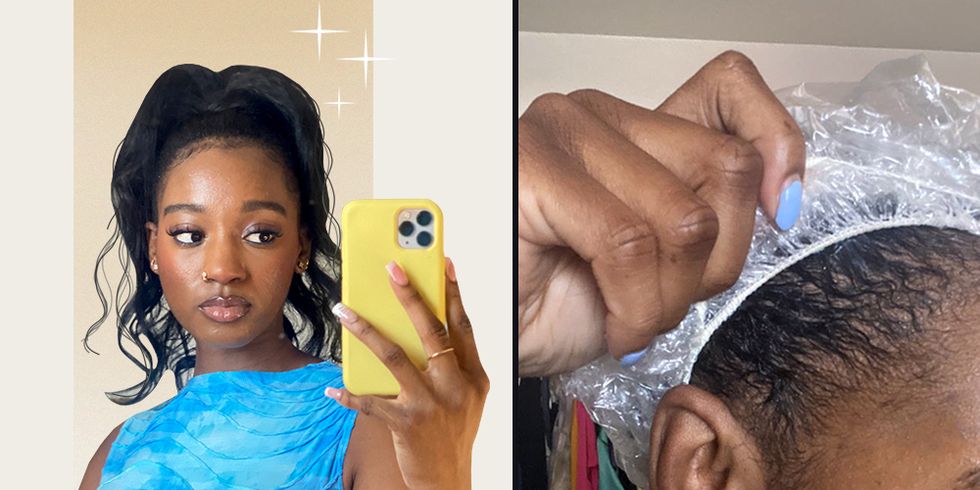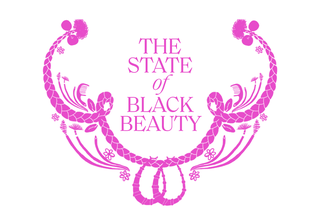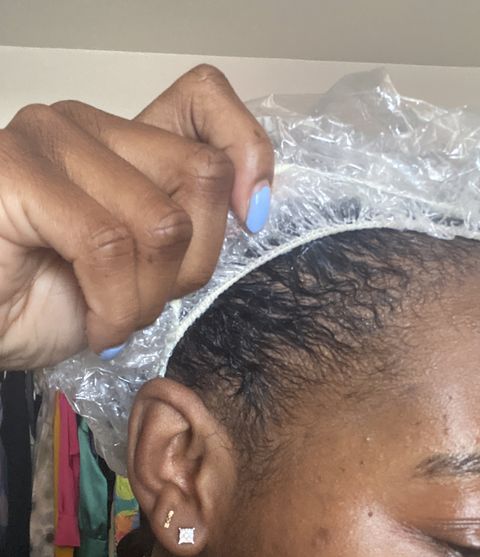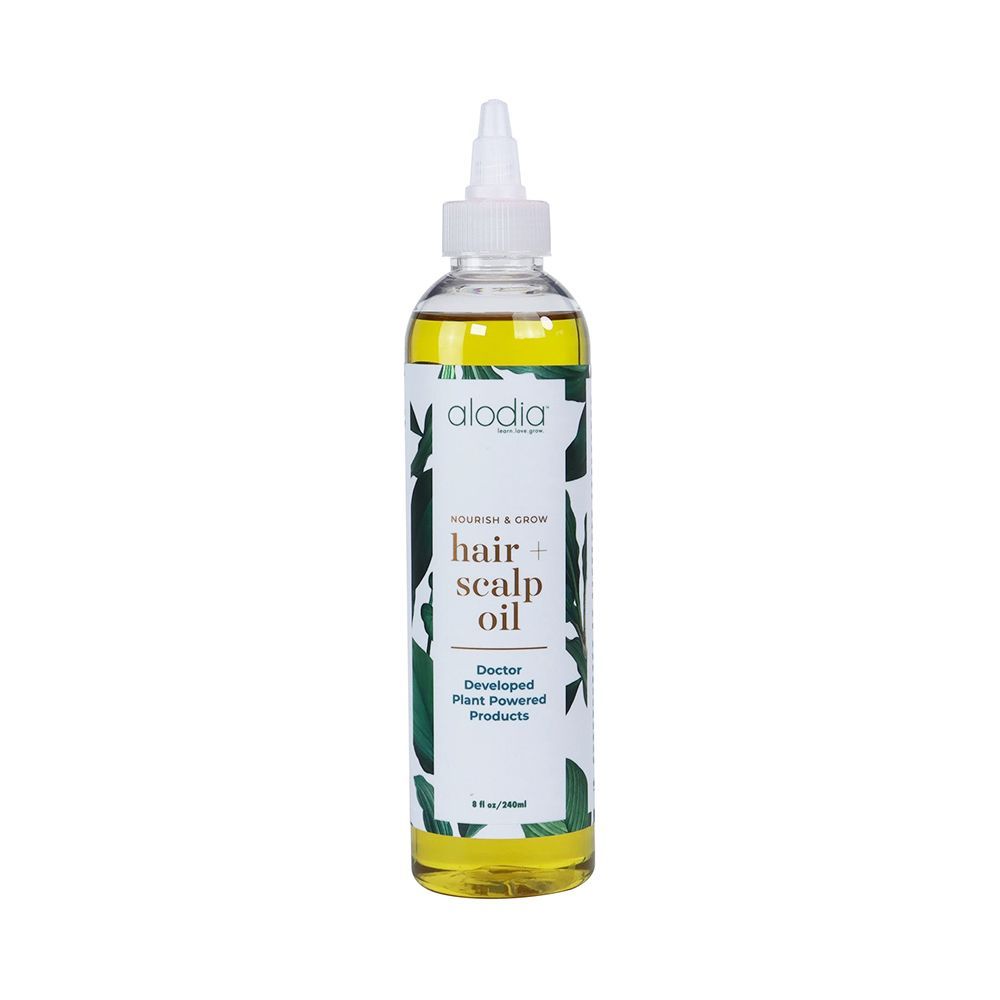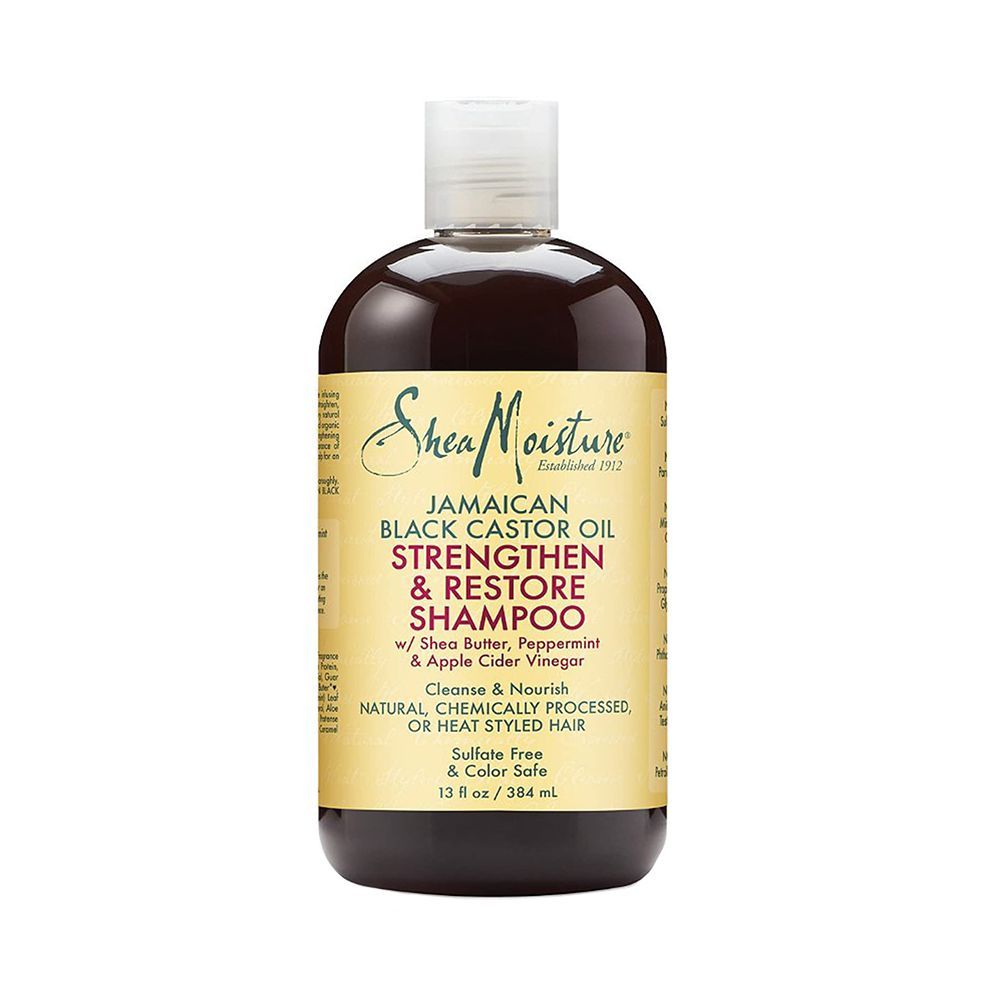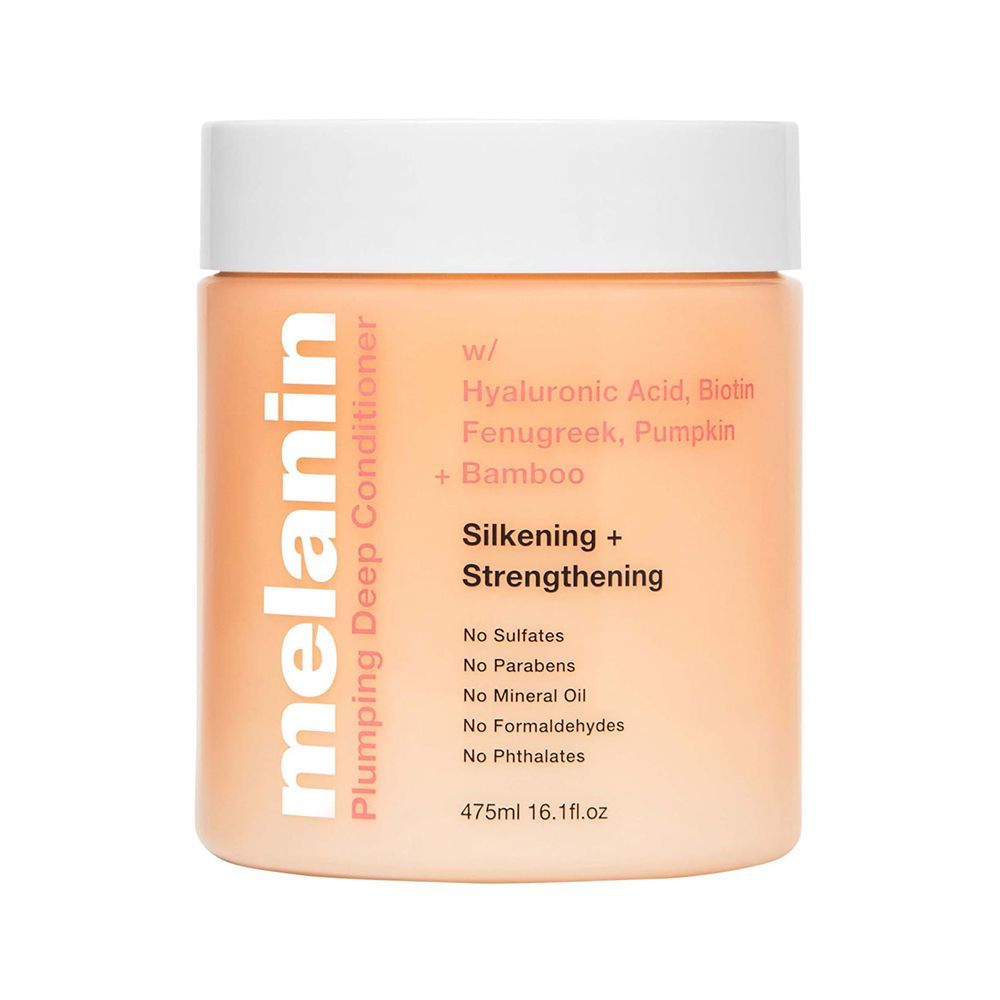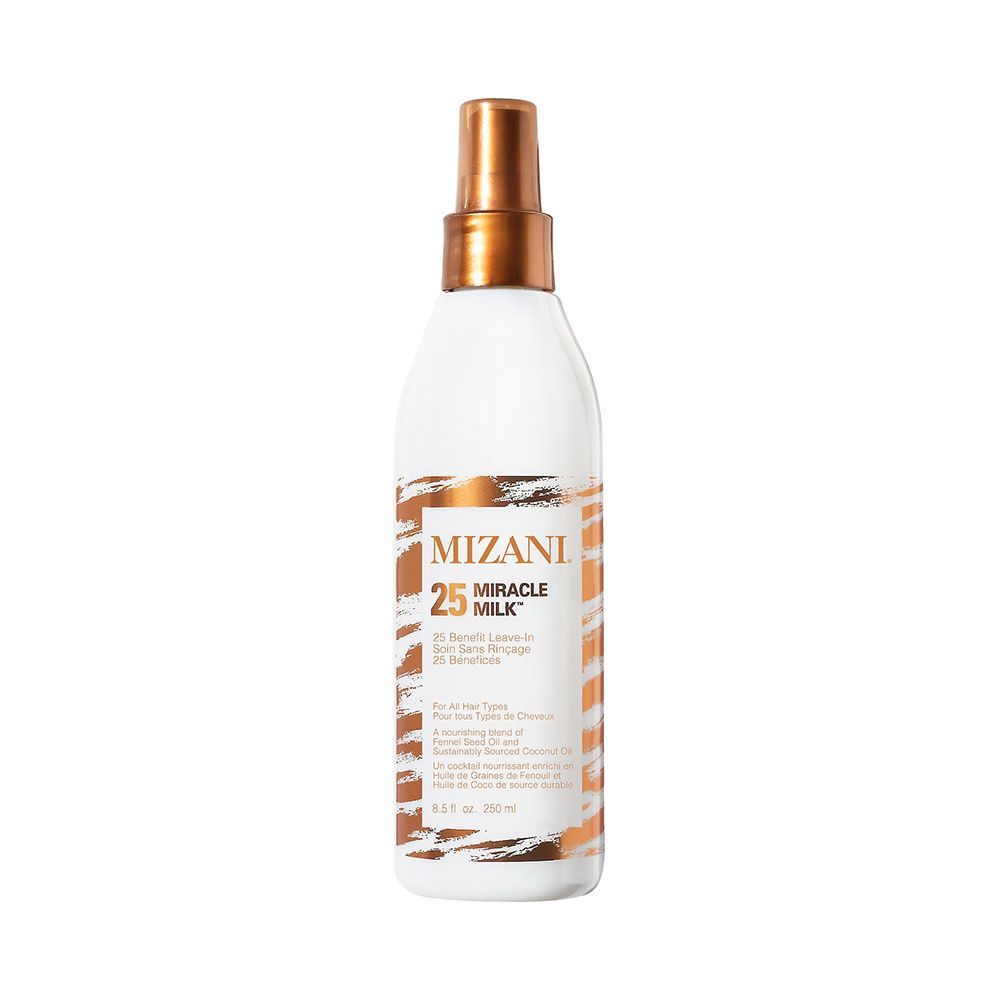Black Girls, Do Whatever You Want to Your Hair
Read all of The State of Black Beauty here.
The large mirror on my bathroom wall has witnessed more singing auditions, crying meltdowns, and self-interviews than the mirror at any NYC club. Like Issa Rae’s Insecure character Issa Dee, my bathroom mirror has always been my sort of silent confidante, especially when it comes to my dissatisfaction with my hair. But today, as I steal a glance into it, I’m feeling an ounce of guilt for what I’m about to do. It’s a balmy summer day and the faint smell of boiled eggs is permeating my bathroom. My mother stands above me, assessing the spiraled coils slightly stretched out from the “Meek braids” they were previously in, and applies the thick, smelly, white mixture. Part, brush, comb in, repeat. After a few minutes of sitting with the concoction in my head, a faint tingling sensation began at the nape of my neck, and it was time to wash out. As the neutralizing shampoo dissolved every drop of the relaxer from my hair, there wasn’t a wince or a wail when the water ran over the tingling spots. Instead, I smirked as I pondered the endless variations of styles my new texture would inspire. Loneliness and frustration can often drive us back to a place of familiarity. For me, it was the relaxer aisle at my local beauty salon. The creamy crack had reclaimed an old victim.
I returned to the mirror to finish the styling portion of the process. My hair was wavy and clung to my scalp the way I remembered a fresh relaxer should. After blow-drying it straight, a faint sheen formed on my fluffy, blown-out strands, causing me to gleefully whip my hair back and forth. As I stood in front of the mirror again, this time with straighter strands cascading down the side of my face instead of coils springing up and out, I began to consider my rationale in anticipation of the innumerable inquiries and unsolicited warnings my friends, family, and social media peeps would inundate me with. Truth is, I don’t have one.
This isn’t the account of a lady whose experience with natural hair left her jaded and debilitated, nor is it a profound rebuke of the movement in which I spent many hours, months, and years taking part. Evidently, a Black woman wearing an Afro is giving the historically discriminatory restrictions placed on Black women the middle finger. However, when we choose a straighter hairstyle, we are overly striving to adhere to European beauty standards. Simply put, I don’t care about my hair anymore, because for so long, people cared too much.
I was among the majority of Black women who resorted to a relaxer at an early age. Insecurities ran rampant in my mind, triggering an internal tug-of-war between, Oh my god, I won’t look nice with short hair, and if I perm my hair, everyone will think I’m trying to look white. My mother didn’t force my hand or reprimand me for having unmanageable hair; she embraced my curls and frequently advised against a perm since I was too young. Ever the inquisitive cat, I decided to finally partake in the Black girl rite of passage.
My aunt ran a hair salon in the basement of my childhood house, so I frequently awoke to the aroma of wrapping foam mousse or thermal iron burner curling irons mingling in the air. I would arrive at the basement salon just in time to see every woman leave with a strut that shouted, “I’m that bitch,” and a crisp, new roller set, perm, or pixie cut to match. I desired to be that bitch, too. When I was nine years old, I talked to my mother and aunt about getting my first perm. We purchased the Soft & Beautiful Just For Me no-lye relaxer, which was touted as a less-damaging alternative to traditional “adult” perms and applied it to my hair. An intense tingling sensation, a few washes, and a roller set later, I finally felt what my aunt’s clients experienced.
Over the years, I wore my relaxed hair on its own, added extensions in between parts for volume, high ponytails, and quick weaves. When I grew bored of relaxed hair, I opted for protective styles like box braids, Marley twists, and cornrows to grow out the perm quickly and return to my natural state. I wanted to make a statement that said, “I love my natural hair even though there are times I hated twisting my hair every night or ran out of different ways to style it.” Thanks to YouTube’s natural hair university—an influx of how-to videos centered on encouraging Black women to care for, grow, and embrace their natural hair—and its key professors like Naptural85, TheChicNatural, and NaturalNeiicey, I grew to love my hair more. I entered college well-versed in the art of pre-pooing, co-washing, and trimming to the point where I decided I could start making my own products. I failed miserably, but learning about the various ingredients I could employ to strengthen and revive the strands and styles I could morph my hair into emboldened me to step out into the world with the same “that bitch” attitude society conditioned me to believe could only be attained with straighter hair.
I couldn’t stay loyal to a particular hairstyle if someone paid me, thus began my stint with wigs. My wig journey was probably my longest hair relationship to date, beginning during my sophomore year of college up until June 2022 when I made my switch. Wigs proved to be the most adaptable, albeit time-consuming, option, allowing me to go from a 26-inch “bust down” to a shoulder-length bob in a matter of days. But after years of stockpiling Got2B Freeze Spray and edge control to mimic one’s hairline on the wigs, I began to miss my own. My decision to relax my hair wasn’t an impulsive one; rather, it was the result of a series of breakdowns when I noticed that my silk-pressed hair only lasted a few days before curling back up and forcing me to go for the yellow can of Got2B spray. Summer 2022 arrived, and the glue, spray, and spritz bottles I’d enlisted to keep my wig in place in New York’s scorching heat declared defeat, leaving me exasperated and in quest of reprieve.
I found solace in the creamy concoction that was once a sore spot in the Black hair community and in the chorus of Black women who shared the same sentiment: I’m going to do what I want. Of course, I knew the implications associated with a return to relaxed hair. After all, relaxer talk has always been more negative than positive—and for good reason. Dr. Isfahan Chambers-Harris, trichologist and founder of Alodia Haircare who has been natural for 10 years, says that while she sees both sides, some of the controversy surrounding relaxers stems from their potential health risks. “Although every woman is free to do what they want, as a scientist, I always have to warn that there’s research and clinical studies that have shown that there is a link to fibroids and breast cancer,” she says. “I hear this a lot, ‘Relaxed hair is much easier to manage.’ But damaged, relaxed hair is not, because I’ve been there before, and I’ve had [damage] to the point where my hair was breaking, and it was traumatizing.”
At the end of the day—whether you’re relaxed or natural—Dr. Isfahan says that healthy hair is paramount. Dr. Isfahan explains that healthy hair is contingent upon a consistent and effective routine, which she breaks down into four steps: pre-poo, shampoo, condition or deep condition, and styling creams. “If you do this consistently—like one time a week [straighter hair textures can opt for twice a month], you will see a difference in your hair,” she says.
- Pre-Poo: “You want to do an oil treatment for at least five minutes by massaging it through your scalp and through your strands. It’s extremely healthy for the hair because it preps the hair for the shampoo treatment, and then it also stops something called hygral fatigue, which is when your hair opens and contracts based on its exposure to water. If the hair does that too often, then it can cause cracks in that outer cuticle layer which can lead to breakage.”
- Shampoo: Dr. Isfahan recommends a hair cleanse at least once a week. “You’ve got to clean away all that debris. None of that, I’m washing with a conditioner.”
- Conditioning/Deep Conditioning: Because Black hair tends to be on the drier side, deep conditioning helps restore moisture after shampooing. “You want to use a deep conditioning mask whether you are relaxed or you’re natural. The goal is to fill up the strands to the maximum amount of water and moisture it can hold, so your hair can feel softer and more manageable. Apply the deep conditioning mask and detangle from the ends to the roots and build it in. Once you put the deep conditioner on, then you can shower the rest of your body while this deep conditioner is soaking in for about five to 15 minutes.”
- Styling: “If you are relaxed, this is where you can use a heat-styling product. Then, you can blow out your hair and flat iron your hair. If you are natural and you want to do a wash and go, you can use a butter cream or gel combo. I love cream-based products, because we need more moisture than the average person. Lastly, you top all of your products with oil, because that’s how you lock in the max amount of moisture.”
Maintaining a health regimen is equally as important as fostering a healthy mindset, one where outside biases don’t dictate how we view our own beauty. What began as a fun project to display the endless versatility of Black hair became a lesson in repairing my attitude towards it—a lesson in tenderly repairing edges thinned out from wigs, in practicing patience through deep conditioning treatments and scalp scrubs, in letting go of the perception that length equates to health, and, perhaps most importantly, freeing myself from the notion that altering my hair in any way other than its natural state equates to having self-hatred.
Along this mere three-month relaxer journey, I’ve morphed and straightened and bent my hair into a bevy of styles. Wigs helped me hide behind my “five-head,” and now it’s on full display. I’ve managed to slash my morning routine in half, thanks to sew-ins and ponytails that don’t require me to wait for the glue to dry or edges to be laid. And when I grow bored of relaxed hair, I welcome the idea of chopping my hair into a sleek pixie cut, reminiscent of the ones I saw exiting my aunt’s salon chair.
I’m not the doe-eyed nine-year-old looking to emulate the confident stride of the older women seated in my aunt’s salon chairs. At 28, the greatest revelation I’ve experienced is understanding that hair is simply just an accessory that acts as an extension of my ever-evolving identity. Hair grows and falls and grows again. These days when I pass the mirror, there isn’t a slight feeling of contempt but of pride. Because if there’s one thing I will always do, it’s exactly what I want with my hair.
Nerisha is the beauty commerce editor at ELLE.com, covering all things beauty (and fashion and music). She has a penchant for sneakers and nude lip glosses, and spends way too much time re-watching 90s sitcoms.

